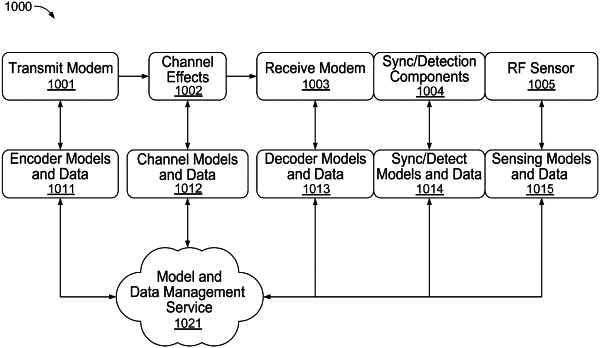| CPC H04W 24/02 (2013.01) [H04W 24/08 (2013.01)] | 19 Claims |

|
1. A computer-implemented method comprising:
obtaining, at a first node, first communications over a radio frequency communication link from a second node;
extracting, by the first node, one or more fields in the first communications, the extracted fields used to analyze the radio frequency communication link;
training, by the first node and using the extracted fields from the first communications, a channel model comprising one or more machine learning models, wherein the channel model is trained to reproduce channel conditions of the radio frequency communication link, wherein the training comprises:
applying a set of desired channel effects to the one or more machine learning models;
in response to training the channel model, generating, using the trained model, a simulated set of channel approximations associated with the radio frequency communication link;
training, by the first node, at least one of encoder or decoder model using the generated simulated set of channel approximations; and
deploying, by the first node and over a network, at least one of the trained encoder or decoder model to a receiver modem hosted by the second node for radio frequency communications.
|